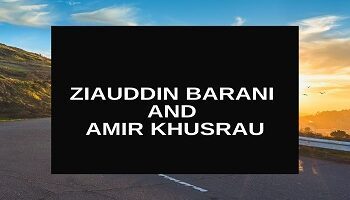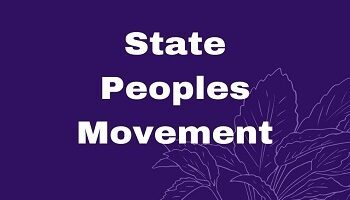Table of Contents
Buddhism Important Facts:
- Philosophy – Pratityasamutpada (reason behind everything).
- Buddhism has its foundation on three pillars–
- Gouthama Buddha- Founder.
- Dhamma- Principle.
- Sangha- Order of Buddhist monks and nuns.
- Siddhartha or the Gautama, also “Tathagata” and “Sakyamuni” was born in 563 B.C. in Lumbini (nepal), near Kapilavastu, the capital of Sakyan Republic, to Suddhodana and Mahamaya (the princess of Kosal dynasty).
- Was brought up by his stepmother- Gautami.
- Married to Yashodhara and had a son, Rahula.
- Left home (Mahabhinishkrama– Great Sacrifice / Great Going Forth) at 29 accompained by Channa (Charioteer), his favourite horse (Kanthaka), after being disturbed by the sight of an old man, a sick man, a dead body and an ascetic.
- As a wandering ascetic meditated with two Brahmin religious teachers- Alarakalama & Udraka Ramputra. And then with ascetics like Kondana, Vappa, Mahanama, bhadiya & Assagi.
- He went to Uruvela (near modern Bodh Gya on the banks of Niranjana river) & sat under a pipal tree or bodhi tree in meditation.
- At 35 or Vaisakha Purnima day, he attained Enlightenment and came to be called as “Buddha” – the Enlightened one.
- Gave his first sermon at Isipatana (Sarnath) in a Deer Park and hence began his religious discourses (Dharmachakrapravartana- turning the wheel of law in motion) which continued for the next 45 years.
- He died at 80 in 483 B.C. at Kushinagara (modern Kasia in U.P.) in the Malla Republic, thus attaining “Mahaparinirvana”.
Five great symbols attached to Buddha’s Life:
- Birth – Lotus / Bull.
- Great Renunciation – Horse.
- Nirvana – Bodhi Tree.
- First Session – Wheel / Dharma Chakra.
- Death – Stupa.
Teachings of Buddhism:
- Concept of Middle Path– It is simply to avoid the extremes and against self-mortification.
- Four Noble Truth (Arya Satya)– The world is full of sufferings; main causes of suffering- desire, ignorance & attachment; suffering could be removed by destroying its cause; path to do so- eight fold path.
- Eight fold path (Ariya-atthangikamaga)–
- Right Understanding (samma-ditthi).
- Right Thoughts (samma-sankappa).
- Right Speech (samma-vaka).
- Right Action (samma-kammanta).
- Right Livelihood (samma-ajiva).
- Right Effort (samma-vayamma).
- Right Mindfulness (samma-sati).
- Right Concentration (samma-samadhi).
- Great emphasis on the law of “Karma” (present is determined by the past actions).
- Preached “Nirvana” the ultimate goal in the life of a man. It means shedding of all desires and end of sufferings, which finally leads to freedom from rebirth.
- Buddha neither accepted nor rejected the existence of God (agnostic).
- Buddha also did not believe in the existence of soul.
- Believe in Non-violence (ahimsa).
- Rejected the authority of vedas, sacrifices and rituals.
Buddhist Council:
First Buddhist Council:
- Date – 483 B.C.
- Place – Rajgriha (sattapanni cave).
- President – Mahakassapa.
- Ruler / Patron – Ajatshatru.
- Purpose – Sutta and Vinaya Pitakas were compiled by Ananda & ‘Upali respectively.
Second Buddhist Council:
- Date – 383 B.C.
- Place – Vaishali.
- President – Sabbakami.
- Ruler / Patron – Kalasoka.
- Purpose – Division of Buddhist Sangha into Orthodox Sthaviravadins & unorthodox Mahasanghikas.
Third Buddhist Council:
- Date – 250 B.C.
- Place – Pataliputra.
- President – Moggaliputta Tissa.
- Ruler / Patron – Ashoka.
- Purpose – Tripitaka final compilation. Sending missionaries to srilanka, south asia etc.
Fourth Buddhist Council:
- Date – 1st century A.D.
- Place – Kashmir or Kundalvan.
- President – Vasumitra.
- Ruler / Patron – Kanishika.
- Purpose – Division of Buddhism in to Mahayana and Hinayana. Sending missionaries to Central Asia, China etc.
Hinayana and Mahayana:
Hinayana:
- Lesser Vehicle.
- No idol worship.
- Gautam Buddha- Teacher / Saint / Reformer.
- Concept of Bodhisattva philosophy (previous birth of buddha).
- Belive in individual nirvan / personal nirvan.
- Text are written in Pali Language.
Mahayana:
- Greater Vehicle.
- Idol worship.
- Gautam Buddha- God.
- Bodhisattva are those persons who are destined to become buddha.
- Nirvan for all.
- Text are written in Sanskrit.
Buddhist Literature:
- Vinaya Pitaka – Rules of Monastic discipline for Bhikkus.
- Sutta Pitaka– discourses delivered by Buddha.
- Abhidamma Pitaka– philosophical sayings of the Buddha & their interpretations. It contains an account of the Mauiyan Emperor Ashoka.
- Jataka – Stories of Buddha’s former lives.
Other Points:
- Bhikku – torch bearer of the dhamma act as friend, philosopher and guide in all religious and social matters.
- Kosala & Magadh associated with the life of Buddha.
- Buddhist Nirvana – escape from existence.
- Buddha preached in Pali language.









Comments (No)